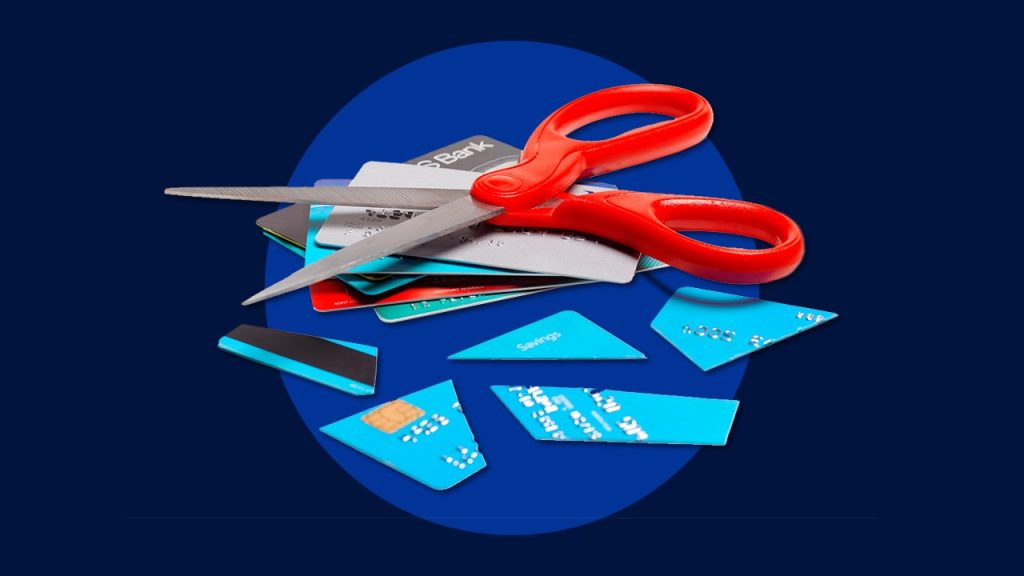Here’s the kicker about credit card debt — as soon as it starts rolling down the hill, it gains momentum and size thanks to interest.
Unfortunately, it’s a slippery slope that nearly half of credit cardholders (48 percent) are on right now, according to November 2024 Bankrate data.
Credit card interest rates are some of the highest borrowing costs out there, currently averaging above 20 percent. When you carry a card balance, not only are you taking money from your future self, but you’re also piling interest on top of interest.
Alarmingly, more than half of those cardholders with debt (53 percent) have been in credit card debt for at least a year.
If you have credit card debt, take matters into your own hands to pay it down as quickly as possible.
— Ted Rossman, Bankrate Senior Industry Analyst
Bankrate’s key insights on Americans’ credit card debt in 2024
- Slightly fewer Americans carry credit card debt than did earlier this year and late last year. 48% of credit cardholders report having a credit card balance, compared to 50% in June 2024 and 49% in November 2023.
- The most common reason for credit card debt is emergency or unexpected expenses. Debtors point to things like unexpected medical bills (15%), car repairs (9%) and home repairs (7%).
- More than half of credit card debtors have carried a balance for more than a year. 57% of households with an annual income of $80,000+ have been in debt for at least a year, and 22% have been for five years or more.
- Most debtors believe they’ll pay off their balance within five years. That’s 30% who think they’ll pay it off in less than a year and 41% who think they’ll pay it off in one to five years.
Nearly 1 in 2 credit cardholders carry debt month to month
In November 2024, 48 percent of American credit cardholders told Bankrate they carry a credit card balance from month to month. That’s compared to 50 percent who said they did in June 2024 and 49 percent who did in November 2023.
While the percentage of debtors is almost flat compared to recent surveys, it’s up significantly from the 39 percent who reported carrying a balance in a December 2021 Bankrate survey, which could indicate that Americans have been wrestling with things like inflation and emergency expenses in the last three years.
That’s not to mention the amounts that cardholders are carrying as balances.
“Credit card balances have risen 51 percent since early 2021 and credit card delinquencies are at their highest point since 2011, according to the Federal Reserve,” says Ted Rossman, Bankrate senior industry analyst. “High inflation and high interest rates have been a nasty combination, and while the worst is behind us, the cumulative effects are significant and will linger.”
Boomers are most likely to have a credit card, least likely to carry a balance
Overall, 75 percent of Americans have at least one personal credit card.
The baby boomer generation (ages 61-79) of Americans is most likely to have a credit card, while the youngest adult generation, Gen Z (ages 18-28) is least likely. Eighty-three percent of baby boomers have at least one credit card, followed by 74 percent of millennials (ages 29-44), 72 percent of Gen Xers (ages 45-60) and 68 percent of Gen Zers.
Among those cardholders, here’s how they rank in terms of whether they are carrying a balance month-to-month:
- Gen X: 54 percent
- Millennials: 48 percent
- Gen Z: 47 percent
- Baby boomers: 45 percent
Notably, boomers are the most likely to have a credit card but least likely to have debt. This may result from decades of earning income, lower cost of living as young adults and experience practicing responsible financial habits.
Although the percentage of Gen Zers (47 percent) carrying credit card debt is in line with other generations, it’s up from Bankrate’s June 2024 survey, when 42 percent of Gen Zers reported carrying debt. Debt among all other generations is down compared to the earlier survey.
Women and lower-income cardholders are more likely to have credit card debt
U.S. Census data from 2022 reveals women working full-time and year-round earn 84 cents for every dollar earned by their male counterparts, according to Bankrate’s Gender Pay Gap Statistics Study. So it may not come as a surprise that 52 percent of female cardholders carry a credit card balance month to month, compared to 44 percent of male cardholders.
Less income leaves less room for both necessary and discretionary expenses. For women who want to keep up with today’s cost of living at the same rate as men, it may cost them.
Female cardholders appeared to be more likely to say their debt was due to day-to-day expenses such as groceries, childcare or utilities (29 percent versus 26 percent of male cardholders) and other emergency/unexpected expenses (18 percent versus 13 percent). Meanwhile, male cardholders appeared more likely to point to retail purchases such as clothing or electronics (13 percent versus 10 percent of female cardholders) and car repairs (11 percent versus 7 percent). Several of these differences, however, were within the survey’s margin of error.
Additionally, lower-income cardholders are more likely to carry debt from month to month:
- Cardholders with annual household incomes under $40,000: 59 percent
- Cardholders with annual household incomes between $40,000 and $79,999: 49 percent
- Cardholders with annual household incomes of $80,000+: 41 percent
Emergency and day-to-day expenses are most common reasons for credit card debt
Among credit card debtors, nearly half (47 percent) say the primary cause was an emergency/unexpected expense(s).
That’s 15 percent who named emergency/unexpected medical bills, 9 percent emergency/unexpected car repairs, 7 percent emergency/unexpected home repairs and 16 percent some other emergency/unexpected expenses.
Meanwhile, more than a quarter (28 percent) cited day-to-day expenses such as groceries, childcare and utilities as the primary cause. Only 11 percent cited retail purchases such as clothing and electronics as the cause of their debt, and only 9 percent blamed vacation/entertainment expenses.
More than half of credit card debtors have carried a balance for at least a year
Fifty-three percent of credit card debtors have been in debt for at least a year — down from 60 percent in June 2024. Another nearly 2 in 5 (38 percent) have been in debt for less than a year.
Here’s a breakdown of how long debtors have carried their balance:
- Less than 6 months: 18 percent
- 6 months to less than 1 year: 20 percent
- 1 year to less than 2 years: 18 percent
- 2 years to less than 3 years: 10 percent
- 3 years to less than 5 years: 7 percent
- 5 years or more: 18 percent
- Don’t know/can’t recall: 9 percent
Highest-income households more likely to have credit card debt for at least a year
Interestingly, the highest-income households with credit card debt are more likely to have had debt for at least a year. Here’s what percentages of debtors from each income bracket have had credit card debt for at least a year:
- Annual household incomes under $40,000: 49 percent
- Annual household incomes between $40,000 and $79,999: 57 percent
- Annual household incomes of $80,000+: 57 percent
The highest income bracket (those earning $80,000+) also includes more than 1 in 5 debtors (22 percent) who’ve been in credit card debt for five years or more.
Nearly 3 in 4 debtors expect to pay off debt within 5 years, but 6% think they’ll never pay it off
Thirty percent of credit card debtors expect to pay off their credit card debt in less than a year. Another 41 percent expect to pay it off in one to five years.
Thus, close to 3 in 4 debtors (71 percent) believe they’ll pay off their credit card debt within five years.
However, 13 percent think it will take more than a decade to pay off, including 6 percent who say they’ll never get out of credit card debt.
But time is money — in this case, the accumulation of interest.
Let’s say you only make the minimum payment on your credit card balance. According to TransUnion, the average credit card balance is $6,380, and Bankrate says the average credit card rate was 20.42 percent in November 2024.
Using those numbers, if you made payments of $125 each month, you’d be in debt for 121 months — more than 10 years — and end up paying $8,651 in interest, according to Bankrate’s credit card payoff calculator.
3 steps to take toward paying off credit card debt in 2025
Here are a few stepping stones toward managing your credit card debt next year. The sooner you can get ahead of your debt, the less you’ll have to fork over in interest fees.
- Include debt repayment in your budget. The new year could bring new changes to your budget, including fluctuating costs of living, vacations, big expenses, life events and income adjustments. Get ahead of these things by mapping out your budget, making sure to leave room for a set amount of debt repayment. If your expenses exceed your income, try looking for ways to cut back on costs or up your earnings with a raise or side hustle.
- Apply for a balance transfer card. When used responsibly, a balance transfer card buys you time to pay off your balance interest free. “If you can’t pay [your debt] off right away, sign up for a balance transfer card with a generous 0 percent interest term,” Rossman advises. “Some of these deals last as long as 21 months. You could pay about $300 per month and knock out the average credit card balance in 21 months without owing any interest.”
- Work with a credit counselor. If your credit card debt has become overwhelming, it’s a good idea to get the help of a professional. Many nonprofits offer credit counseling for free or a low fee. As Rossman says, “A solid backup plan, especially if you have a lower credit score or more than five or six thousand dollars in credit card debt, is to work with a reputable nonprofit credit counseling agency such as Money Management International.”
Read the full article here












